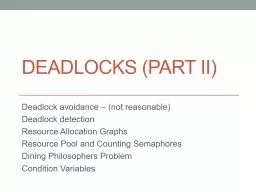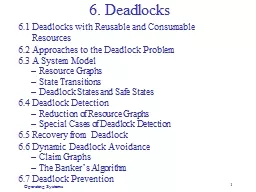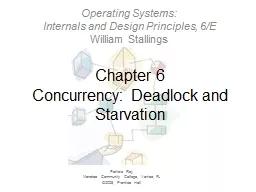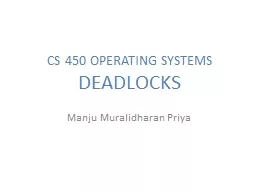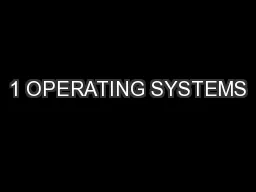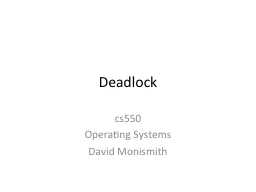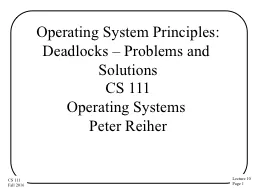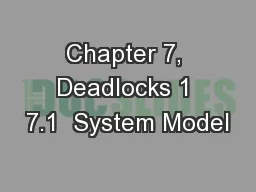PPT-Deadlocks (part II) Deadlock avoidance – (not reasonable)
Author : pamella-moone | Published Date : 2018-03-08
Deadlock detection Resource Allocation Graphs Resource Pool and C ounting Semaphores Dining Philosophers Problem Condition Variables Resource Tables Deadlock
Presentation Embed Code
Download Presentation
Download Presentation The PPT/PDF document "Deadlocks (part II) Deadlock avoidance �..." is the property of its rightful owner. Permission is granted to download and print the materials on this website for personal, non-commercial use only, and to display it on your personal computer provided you do not modify the materials and that you retain all copyright notices contained in the materials. By downloading content from our website, you accept the terms of this agreement.
Deadlocks (part II) Deadlock avoidance – (not reasonable): Transcript
Download Rules Of Document
"Deadlocks (part II) Deadlock avoidance – (not reasonable)"The content belongs to its owner. You may download and print it for personal use, without modification, and keep all copyright notices. By downloading, you agree to these terms.
Related Documents

